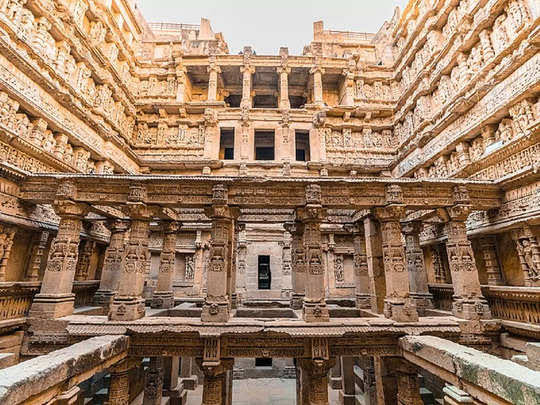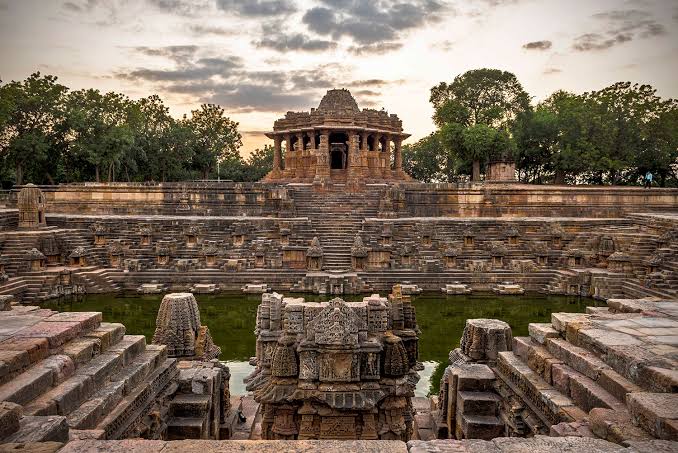Among India’s forgotten architectural wonders, Rani Ki Vav stands as a lost treasure of Gujarat’s royal past. Built in the 11th century by Queen Udayamati, this subterranean structure is not just a stepwell but a symbol of royal devotion and advanced engineering. Over centuries, it remained buried under silt until its rediscovery, restoring its place as a UNESCO World Heritage Site and one of India’s most breathtaking historical landmarks.
A Stepwell Unlike Any Other
Unlike typical stepwells, Rani Ki Vav is designed as an inverted temple, reflecting the cultural and spiritual significance of water. With its seven levels of elaborate corridors, it showcases more than 500 finely carved sculptures.
The Forgotten Masterpiece & Its Rediscovery
For centuries, this architectural wonder remained hidden beneath layers of sediment. When it was excavated in the 20th century, archaeologists were astounded by its preserved carvings and intricate design. Today, it stands as a testament to India’s lost architectural grandeur.
Why Rani Ki Vav Belongs to India’s "Lost Cities"
✔ Once buried for centuries under the Saraswati River’s silt, it was only rediscovered in modern times.
✔ Represents a lost form of architecture, with very few surviving stepwells of this scale.
✔ Holds royal significance, built by a queen as a tribute to her late husband.
Best Time to Visit & Travel Tips
- 📍 Location: Patan, Gujarat, India
📅 Best Time: October to March
💰 Entry Fee: ₹40 (Indians), ₹600 (foreigners)
✈ Nearest Airport: Ahmedabad (125 km away)
Once a lost wonder, Rani Ki Vav now stands as a breathtaking reminder of India’s royal and architectural history. A visit here is a journey into the past, where art, devotion, and engineering come together in perfect harmony.






